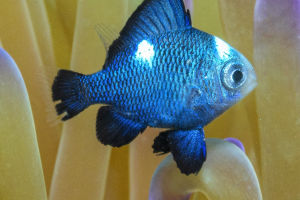
Nature's Camouflage

In the sprawling grasslands of Africa, one animal captivates the eye with its distinctive appearance—the zebra.
Its black and white stripes not only dazzle observers but also embody a marvel of natural design.
What purposes do zebra stripes serve? This article thoroughly explores this question.
The Evolutionary Enigma
Let us begin by examining zebra stripes through an evolutionary lens. Scientists hypothesize that zebra stripes may have evolved as a survival adaptation.
Despite the apparent tranquility of Africa's grasslands, they teem with predatory threats. As herbivores, zebras must remain ever vigilant against predators while devising means to safeguard themselves.
Confounding Predators
Related
 Unveil the mystery of rabbit eye colors—red for whites, varied hues for grays and blacks—exploring genetic and environmental secrets.
Unveil the mystery of rabbit eye colors—red for whites, varied hues for grays and blacks—exploring genetic and environmental secrets.
 Orcas' intelligence fosters affinity with humans, hinting at evolutionary connections.
Orcas' intelligence fosters affinity with humans, hinting at evolutionary connections.
 Oceanic biodiversity mysteries unravelled.
Oceanic biodiversity mysteries unravelled.
 Unveiling the secrets of resilient camels in desert landscapes.
Unveiling the secrets of resilient camels in desert landscapes.
 Snails are ancient and mysterious creatures that are widely distributed in humid environments around the world.
Snails are ancient and mysterious creatures that are widely distributed in humid environments around the world.
 Butterflies, symbols of transformation, grace nature with their enchanting life journey.
Butterflies, symbols of transformation, grace nature with their enchanting life journey.
The black and white stripes of zebras induce visual confusion in predators. Across the grasslands, light constantly shifts. From dawn to dusk, variations in light angles cause the stripes on a zebra's body to undergo dynamic changes.
These ever-shifting stripes confound predators, making it arduous for them to track the zebras' movements and thereby diminishing the risk of predation.
Distorting Distance Perception
Moreover, zebra stripes aid in distorting a predator's perception of distance. The alternating arrangement of black and white stripes poses challenges for predators in accurately gauging the distance and speed of zebras, thereby impeding their hunting endeavors.
Protection Against Heat and Insects
Beyond thwarting predators, zebra stripes serve as a shield against sweltering weather. Black stripes absorb more sunlight and heat, whereas white stripes reflect more light.
This stark contrast generates an airflow that aids in reducing the zebra's body temperature. Furthermore, observations suggest that the black and white stripes on a zebra's body also mitigate insect infestations. Insects find themselves confounded by this visual clutter, struggling to locate the zebra's body.

Social Cohesion and Recognition
Additionally, zebra stripes likely play a pivotal role in social interaction and identification. Each zebra's stripes are as unique as human fingerprints. This distinctiveness facilitates easy identification within groups and fosters robust relationships within families and herds.
Advancing Understanding Through Research
While scientists have gained some understanding of zebra stripes, their functionality continues to be subject to in-depth research.
Some researchers employ mathematical modeling and experimental approaches to explore the optical effects of stripes and their impact on a predator's visual perception. Through these endeavors, we stand to gain a more nuanced comprehension of the enigma surrounding zebra stripes.
In Conclusion
Zebra stripes epitomize a unique feat of natural design. Not only do they render the animal conspicuous amidst the grasslands, but they also serve as a crucial defense mechanism against predators and harsh weather conditions.
Despite our existing insights into their function, zebra stripes remain a subject worthy of meticulous study. With the continuous advancement of science and technology, we are poised to unravel the profound significance of this marvel of nature.